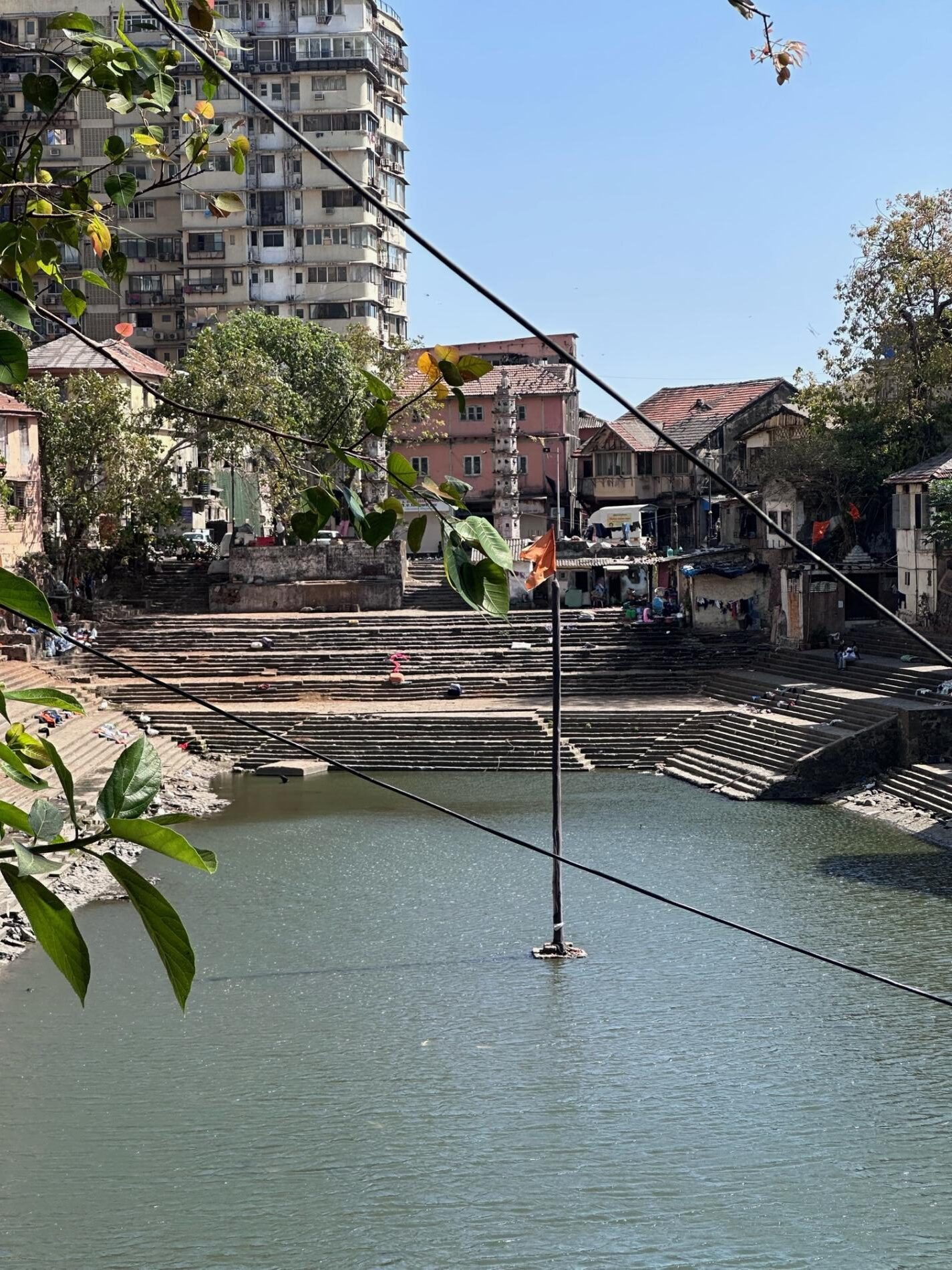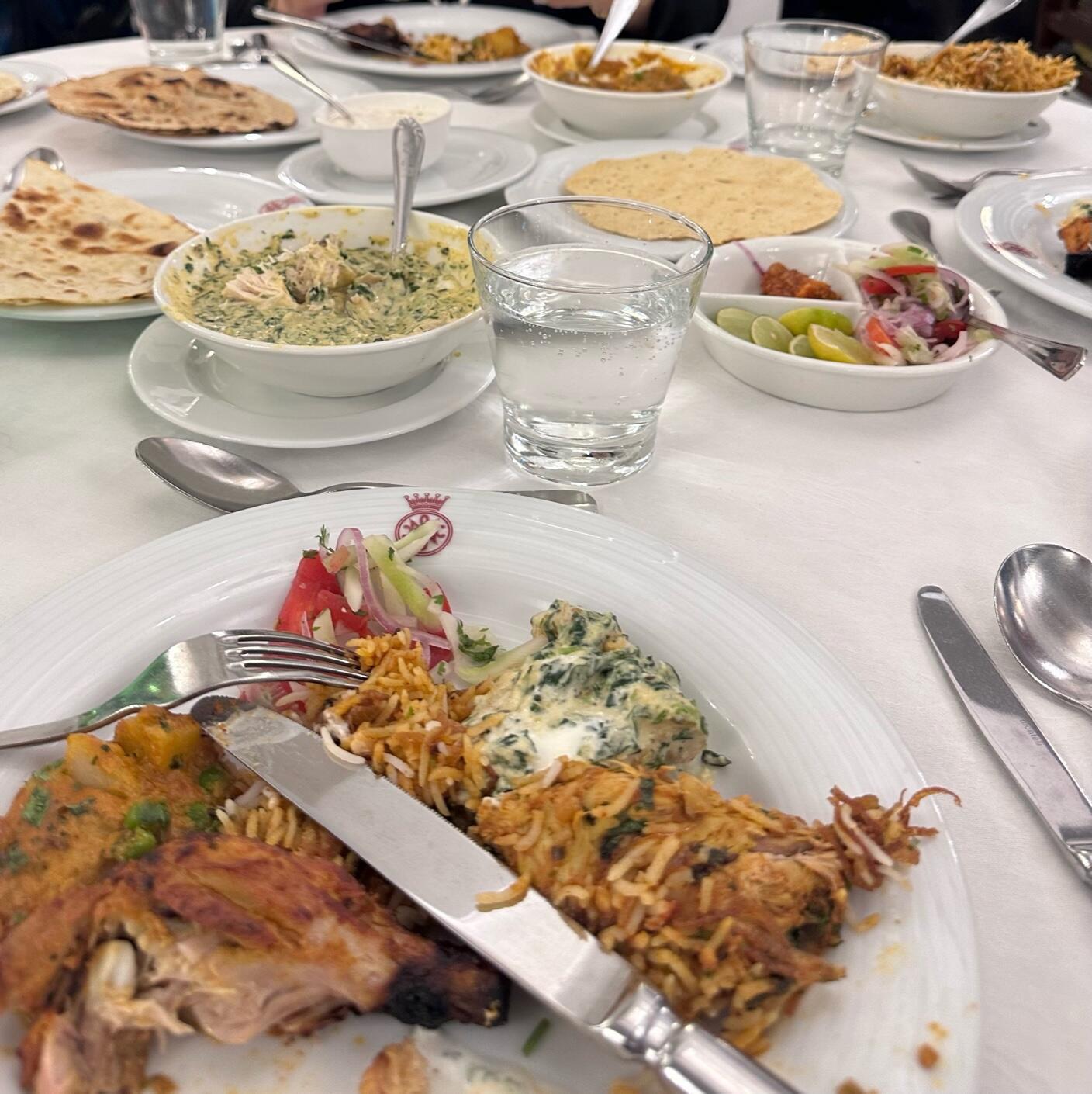Mumbai, Day 1
- At August 20, 2023
- By Jessica
- In Travel
 0
0
Victoria Terminus
We were completely unprepared for how stunning Mumbai is. We've read many books about the slums, political and religious strife, gang rapes, hotel massacres, and vast disparity between rich and poor. All of that exists amidst architecture that is magnificent and grand, thousands of trees, a beautiful beach that runs the length of the city like a sparkling collar. It is extremely painful, however, to see barefoot children and babies living on trash-strewn streets.
An astonishing 62 percent of Mumbai's 22 million population live in slums or on the street. Many others live in dilapidated housing with no gas lines and toilets without water. Yet every other building looks like it's part of Oxford University.
Imagine walking down Fifth Avenue and a cow is blocking rush hour traffic. That's just what happened to us today in Mumbai. Alas.... Bovines, bovines everywhere, but not a steak to eat in this mostly vegetarian culture.
It was a beautiful, breezy, not so humid day in Mumbai or what is still called Bombay by the locals. In 1534, the Portuguese named the city Bom (big) bahai (postal area) - not very glamorous when you dissect it, is it? The city came under the control of the British Crown in 1661 and was immediately leased to The East India Company for 10 pounds per year. The name was changed to Mumbai, as part of the Decolonization Act in 1995. The city's name is derived from Mumbadevi, the patron goddess of the fisherfolk who migrated to the islands from Gujarat centuries ago.
Mumbai is India's wealthiest city, home to Bollywood, and beautiful art deco cinema palaces and hotels reminiscent of Miami Beach. Originally, the city was seven islands inhabited mostly by fisherman and salt merchants. Fortification and land reclamation efforts undertaken by the British made one land mass. This project was completed in 1918, which explains the preponderance of art deco buildings along the shore.
Victoria Terminus Train Station is a magnificent building melding multiple architectural styles. It is beautifully lit up at night, apparently electrified for the G20 meeting.
Trains are the city's lifeline, where 8 million people commute daily. Local trains leave every three minutes and have NO AC. Each train has twelve coaches of which three are exclusively for women. During the lengthy security procedures every time we get on or off the boat, men and woman must be separated.
It is fascinating to us how common it is to have many generations of family living together under the same roof of a rambling old apartment. Our dinner hosts have a 50 year old son, his wife and child, and their 45 year old unmarried son all living with them. She says, "It's a party all the time." We just read a book called Family Matters by Rohinton Mistry (yes the same author as A Fine Balance) on this subject. It was terrific.
Mumbai is known for its diversity of neighborhoods so we embarked on a walking tour to get a first hand feel. One area looks like Embassy Row in Washington, DC, lined as it is by former English private clubs. We were invited by friends to fine at their club last night. The club is still named after British Lord Willington.
The Malabar Hill neighborhood faces the Arabian Sea. One of Jessica's book groups read The Widows of Malabar Hill a couple of years ago. Another interesting read.
According to Hindu religion, ashes of dead persons must run through the waters of the sacred River Ganges in order to return to the cycle of life to be reborn. The Ganges does not run through Mumbai but human beings are nothing if not resourceful so we visited this lake fed by a fresh water spring reputed to originate at the Ganges.

Before 10 am every morning Mumbai residents can be found performing these death rituals. First they immerse the ashes of the deceased, then they shave their heads, (there is an enterprising barber at the lake,) then they bathe, then they go to temple but only after ten days of mourning.
After our fascinating walking tour of Old Mumbai, we proceeded to a fashion designer's home/showroom. The charming Portuguese style home has been in the designer's family for 220 years. Jessica made a new friend in the dressing room - Sangeeta. We will meet her again. Needless to say, we made a huge contribution to the Indian economy before leaving the shop.
Certainly the highlight of the day was a wonderful dinner with our friends mentioned earlier. Their club is gorgeous, like stepping back in time to the Raj era. And we let them order for us so we sampled a smorgasbord of Indian delicacies. We wonder how you say smorgasbord in Hindi?

It was a little creepy coming back late at night. The port is abandoned save for starving packs of stray dogs (and we don't just mean the cab drivers). Next time we travel abroad we're going to pack a suitcase full of dog biscuits.


